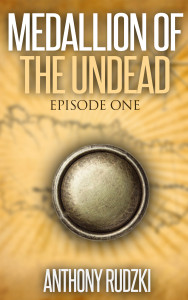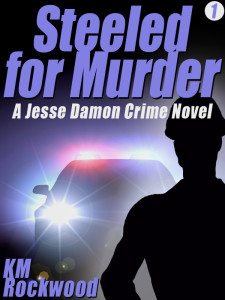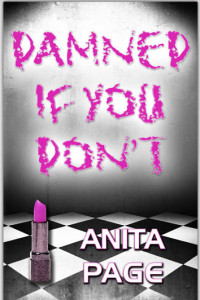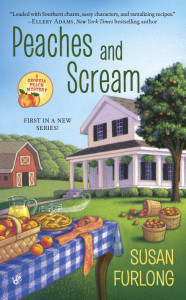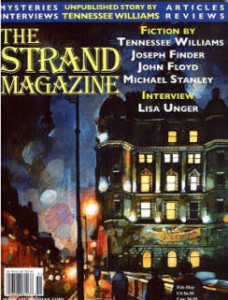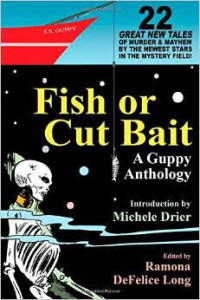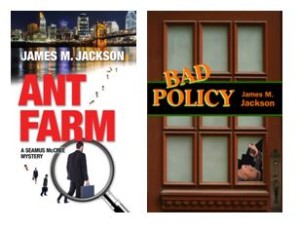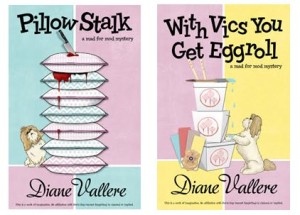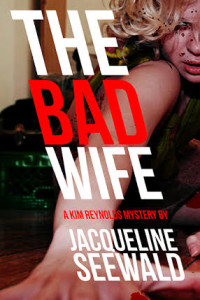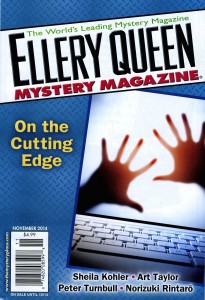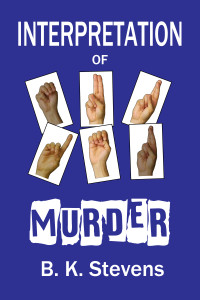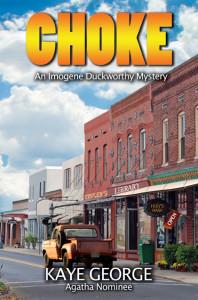Every Tuesday, a mystery writer explains how he or she faced the challenges of those brutally difficult–and vitally important–first two pages.
As of 11/7/17, this blog is now being continued on Art Taylor’s website. You can find it here: http://www.arttaylorwriter.com/2017/11/07/the-first-two-pages-robert-loprestis-the-chair-thief/. If you would like to contribute to the blog, please reach out to Art Taylor through his website.
Bogusly Autobiographical
Dave Zeltserman
September 1, 2015
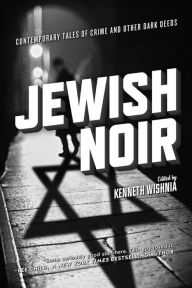
SOMETHING’S NOT RIGHT is one of my ‘bogusly autobiographical life in writer’s hell’ stories, which are stories featuring a writer with just enough bogusly autobiographical details to get my cousin and other friends calling me after they’d appeared in the past to make sure everything is okay and my wife is still alive. What makes this story different than these previous ones is that the bogusly autobiographical details hit closer to home, and the writer isn’t given a fictional name, but goes nameless. In fact, readers might start wondering how much of this story is true, and whether I could be this unnamed narrator.
The First Two Pages Blog
Wendy Hornsby
August 25, 2015

The most challenging part of writing a story, whether it’s a short-story or War and Peace, the Sequel, is getting the opening just right. Editors and the reading public are a tough audience that wants immediate reading gratification. In the first few passages, if the writer doesn’t dazzle the reader while setting the tone, identifying the stakes, placing the tale in time and place, and delivering some beguiling characters, then the reader will move on to something else. So, how to begin?
The First Two Pages of GREENFELLAS: In Which Introductions Are Made
Robert Lopresti
August 18, 2015
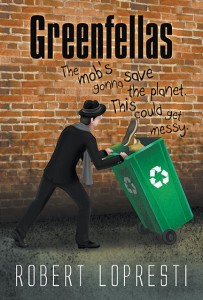
When I wrote the first two pages of my new novel I had three goals in mind – besides the obvious one of starting the damned thing, of course.
First, I wanted to tell the readers something very specific about my protagonist, to prepare them for some of the odd turns the book would take. You see, GREENFELLAS is a novel about a mobster, but it is not a typical crime story. It’s a comic tale of a top Mafiosi who, upon becoming a grandfather, decides it is up to him to save the environment for his little granddaughter.
Character, Setting, Problem
Mark Troy
August 11, 2015
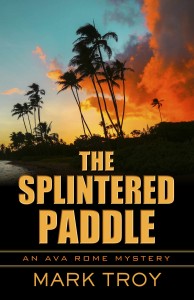
The Maltese Falcon opens with a quick description of Sam Spade (“a blond satan” and “steep, rounded slope of his shoulders”), followed by the arrival of a visitor. The visitor is Miss Wonderly. We get a brief description of her, some telling details of Spade’s office (the limp cigarettes in the ash tray and the flecks of ash on his desk) and then Miss Wonderly begins to explain the problem that brought her to Spade. All of this occurs quickly. By the end of the second page, we have characters, setting, and problem.
Planting Questions
Earl Staggs
August 3, 2015
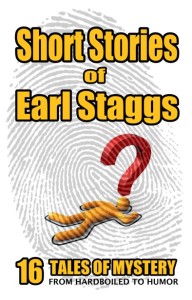
To draw readers into a story, I try to reach into their heads and get a good grip on their curiosity. I figure if I do that and hold on tight, they’ll stick with the story until I satisfy that curiosity. To put it another way, in the opening paragraphs, I try to plant questions in the minds of readers that are intriguing enough they’ll keep reading until their questions are answered.
Hook, Line and Winker
Robert Mangeot
July 28, 2015
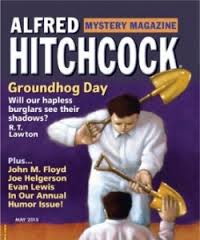
Problems. Every writer has them, not least an opening that grabs a reader by the eyeballs. Setting, mood, point of view, conflict all packaged and launched just so, in two pages. But in a short story, two pages will have plowed deep into the proceedings, a sharp hook and set-up combined, every line serving both masters. Get the balance wrong, and the reader slips off that hook.
The First Two Pages of Medallion of the Undead
Anthony Rudzki
July 21, 2015
I joined the Fantasy_Writing group on Yahoo in June of 2009. I had always thought about writing and the challenge of putting pen to paper and producing a novel. Something with compelling characters, a suspenseful plot and cliffhanging chapters that would make my readers take a quick look at the clock in the post-midnight light and continue on.
A Conversation with a Protagonist About the First Two Pages
KM Rockwood
July 14, 2015
Many of the characters in my stories are very real to me. They have minds of their own. I often talk to them, especially when I hit a problem. They answer me.
Jesse Damon, the protagonist in my Jesse Damon Crime Novel series, appeared fully formed in my mind and, in his unassuming but persistent way, suggested that his was a story that needed to be told, and I was the one who needed to tell it.
Damned If You Don’t: The First Two Pages
Anita Page
July 7, 2015
Damned If You Don’t (Glenmere Press) is a dark traditional mystery set in the Catskills. The book features Hannah Fox, a community activist raised in the sixties on picket lines and peace marches, who battles an eminent domain scam that threatens a friend’s land and ends in murder.
Hooking the Reader with Character Development
Susan Furlong
June 30, 2015
I love to read. I’m also a busy mom, so I don’t have much time, or patience, to invest in a book that doesn’t hook me from the first couple pages. What I’m most drawn to in a book isn’t the setting, or pretty writing, or even the premise of the story. What draws me in and keeps me reading is the main character. So, when I choose a book or a new series to read, I often skim the first two pages to see if the author can introduce me to a character who I want to get to know better. Someone who I’ll care about and will want to travel with for the course of the story. Because isn’t that what a book is? A journey of sorts? And who wants to be stuck on a long trip with a boring travel mate?
Antagonizing the Protagonist
John M. Floyd
June 23, 2015
One of my favorite quotes about writing came from author Margaret Lucke. She said, “You can’t protect your characters–the words protagonist and antagonist have ‘agony’ built in.” She was right. Especially about the protagonist. As fiction writers, one of our primary goals should be to heap a heavy load of misery onto the shoulders of our hero or heroine, and to do it as soon as possible.
The Sea Horse Trade
Sasscer Hill
June 16, 2015
This author believes that properly staging each scene of a novel is vital, and the first scene the most critical of all. Imagine you are watching the opening of a play. The stage is dim, a wind is blowing, a female figure walks alone on a deserted street, she appears worried—you know immediately this is not a comedy, probably not a cozy. THE SEA HORSE TRADE is a novel about human trafficking, and though it is not without humor, I wanted to set the mood and the stage in the first paragraph.
Rapid Orientation Through a Layered Approach
Paula Gail Benson
June 9, 2015
I write short stories. For me, two pages may be a fifth of the tale I’m telling.
Within the first two pages, I need to introduce the main characters, setting, and situation confronting the protagonist as well as inserting a few hints about how the matter will be resolved. I have to establish relationships and conflict so that readers are already wondering what’s going to happen next.
My story, “The Train’s on the Tracks,” recently published in FISH OR CUT BAIT: A GUPPY ANTHOLOGY (Wildside Press, April 2015), takes place on the floor of a State Senate during a filibuster over a controversial bill. Thanks to CSPAN, news programing, and movies, readers have some familiarity with how a legislative chamber looks and what happens during a debate, but this story presents a different perspective from what they are used to viewing.
The Opening Six-Pack
James M. Jackson
June 2, 2015
I strive to write openings that resemble a hunk’s rippling abdominal muscles: strong, taut, and without a layer of fat–your prototypical six-pack. Producing that effect does not come without great effort. To develop an opening six-pack, I incorporate six design elements.
My Gangbuster First Paragraph
Judy Alter
May 26, 2015
Two days ago I talked to four groups of fourth graders at an elementary school. They were surprisingly well informed about writing and fiction (hats off to their teachers!). I asked them if it was a story if I described a walk through the woods and described the trees and undergrowth and animals. They said no, so I asked what it would take to make a story. They answered “rising action,” a problem, etc., but the thing they most consistently said was, “A hook.”
I’ve always been a believer in “hooking” the reader from the first sentence. I’m admittedly a pantser, having always thought outlines were for all those research papers I did in graduate school. So if I can get that first line done, be it a blog, book review, short story, or novel, I’m usually on my way.
I’ve written one really gangbuster opening in my long career. The Perfect Coed opens with this short paragraph:
Susan Hogan drove around Oak Grove, Texas, for two days before she realized there was a dead body in the trunk of her car. And it was another three days before she knew that someone was trying to kill her.
Hooks With a Purpose
Nupur Tustin
May 19, 2015
Readers of historical mysteries like myself enjoy nothing better than being transported from our mundane twenty-first century existences into the exotic realms of the past. We’re huge suckers for the transportive power of the classic fairy tale opening of “once upon a time” merged with the immediacy of “one day” when something happens to change everything. So that’s the effect I strove to create in the opening lines of my Joseph Haydn mystery, A Minor Deception:
On a chilly December morning in the year 1766, the inhabitants of the little town of Eisenstadt bustle about in a state of feverish anticipation. Eisenstadt might be no different from any other obscure free town in Royal Hungary; too insignificant to merit a spot on the postal route. Nevertheless, it has drawn the attention of the entire Empire upon itself.
The widowed Empress Maria Theresa is to grace the little town in her Hungarian domains with a visit in three weeks, bringing to an end a year-long period of mourning for her beloved husband.
But the man whom the town credits for this remarkable event is at this very moment beginning to fear something might go amiss in the weeks to come.
If At First You Don’t Succeed
Diane Vallere
May 12, 2015
Several years ago, I wrote the first sentences of what would become PILLOW STALK, the first of the Mad for Mod Mysteries:
“What about Doris Day?” I asked.
Six sets of eyes stared me down like it was the worst suggestion they’d ever heard.
I admit that I was a bit in love with the whole project–interior decorator who models her style and her business after a Doris Day movie and ends up involved in a homicide investigation when women dressed like the actress start turning up dead–and when the book was finished and polished, I sent it out and sat back, waiting for the offers of representation to pour in. I had some nibbles, too, requests to see the first 100 pages, requests to see the entire manuscript, but none of the nibbles resulted in what I wanted: a gushing endorsement that what I’d written was unturndownable, leading to an offer of representation.
Novel Beginnings for Mystery Fiction
Jacqueline Seewald
May 5, 2015
For those of you who are unfamiliar with my Kim Reynolds mysteries, I’ll mention that THE BAD WIFE is actually the fourth novel in the series and the most recent. Each novel in the series features the same main characters. However, each novel stands alone as a unique and complete murder mystery. In addition, the main characters are not static. Like real people, they lead changing lives and have complex personalities. Kim Reynolds, an academic librarian who is also a reluctant sleuth and psychic, has been romantically involved with Lieutenant Mike Gardner, a homicide detective. It comes as something of a shock to both Kim and him discovering that he is still legally married.
Playing the Odds
Art Taylor
April 28, 2015
In his 1842 review of Hawthorne’s Twice-Told Tales, Edgar Allan Poe laid out a hefty challenge for short story writers–a pronouncement that likely still threatens to humble many of us today: Speaking of how a “skillful literary artist” should approach craft, Poe wrote that “having conceived, with deliberate care, a certain unique or single effect to be wrought out, he then invents as may best aid him in establishing this preconceived effect. If his very initial sentence tend not to the outbringing of this effect, then he has failed in his first step.”
Trapped by a Killer
B.K. Stevens
April 21, 2015
At first, the killer seemed so exciting–exactly what I’d always longed for, what I’d often sought but never found. I didn’t see the dangers until it was too late. Even then, I should have tried to break free. I should have just walked away. But I couldn’t. I was hooked. Somehow, I had to find a way to make this work.
All mystery writers yearn to come up with killer first paragraphs, ones that jump off the page, seize hold of readers, and pull them in deep. I tried to write that sort of first paragraph for Interpretation of Murder, and I think I succeeded–at least, it feels like a killer to me. But sometimes killer first paragraphs, like other kinds of killers, make us feel trapped. Sometimes, when we focus on packing as much drama as possible into a first paragraph, writing the follow-up paragraphs gets tricky. My killer proved so problematic that I came close to cutting it and looking for a blander way to begin. I couldn’t do it. I liked the paragraph too much. Did I make the right decision? Frankly, I’m still not sure.
When Something’s Not Quite Right
Terrie Moran
April 14, 2015
I am so excited to be with you today to talk about how the first two pages of my cozy mystery novel, Well Read, Then Dead, came to be. I believe the story’s beginning enticed folks to read further and resulted in the book being recently nominated for an Agatha Award for Best First Novel.
A few years ago I decided to write a cozy series set on the barrier island community of Fort Myers Beach on the Gulf Coast of South Florida. Now Fort Myers Beach is a real place, and I wanted to keep true to this fantastic beach and resort community, but I still needed to invent a fictional location within Fort Myers Beach for my characters to use as a base. It had to be a warm, welcoming place smelling of delicious food and filled with books and sunshine. So I invented the Read ’Em and Eat café and bookstore owned by protagonist Sassy Cabot and her “bestie” Bridgy Mayfield.
How I Hook ‘Em
Kaye George
April 7, 2015
I’m a big believer in bringing the reader into the setting as soon as possible. I like to start in media res (smack dab in the middle of the action), but that can disorienting if you have no idea where you are as a reader.
My goal is to let the reader know WHO’s here, WHERE they are, and WHEN the scene is happening. I always attempt to get all five senses into every scene. I can’t do that every time, of course, but I try. I’m skipping the sense of SIGHT because every scene has to include that.
Here are some of the ways I try to do all this. The very beginning of CHOKE, the first Imogene Duckworthy mystery:
